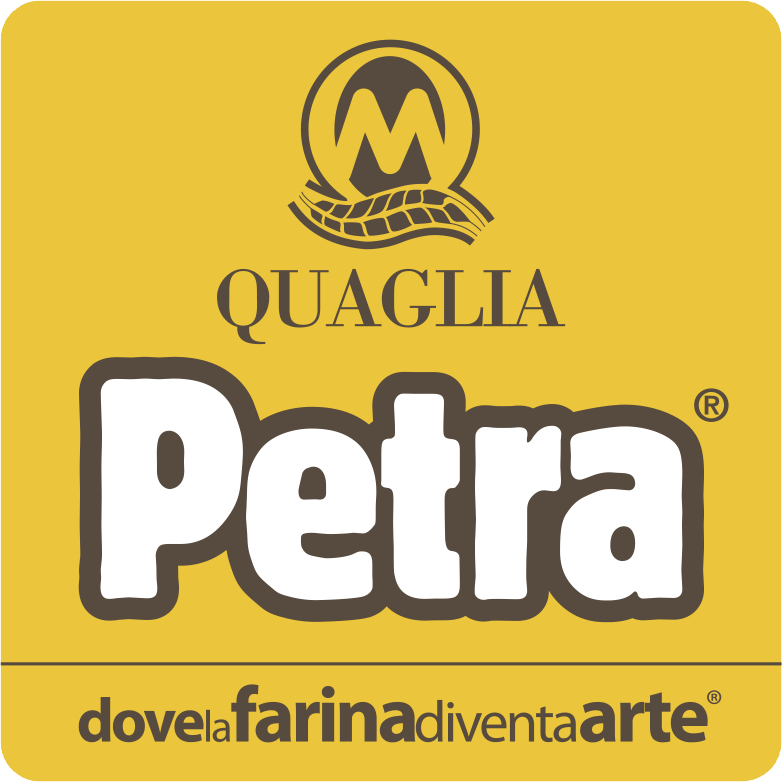The 14th edition of Dossier Dessert in the Auditorium, the sweet side of the congress since its second edition, showcased techniques, inspirations, exotic and Italian ingredients, childhood memories and innovations...
Different interpretations of the many facets of the sweet universe with a fil rouge given by Valrhona chocolate – which also features many nuances in terms of flavours, colours, origins and aromas, summed up in one of the most beloved ingredients in pastry-making, regardless of the latitude – and by memories. A kaleidoscope of different languages directed and arranged by Maddalena Fossati, director at La Cucina Italiana.
Jordi Butron, the creator of Espai Sucre in Barcelona – a restaurant whose menus is only made of desserts as well as a pastry-making school – gave a lesson, rather than a speech, and explained the importance of the teaching method he uses to «train creators, not executors». Analysing the creative process behind a dessert is essential, especially with pastry-making in restaurants, and not just pastry shops, where one must consider the immediacy and dynamism of a recipe that has to be made there and then, and its ephemeral nature.
According to Butron, everything is based on a “psychological palate”, a sort of library of flavours we all build through tasting and other experiences, and which leads us to choose ingredients and associate them to other “points of reference” based on their specific characteristics, creating something new. But it also leads us to choose an item from a menu instead of another, because it tickles our memory creating expectations and desires. The chosen technique is also essential. It must be chosen for the benefit of flavours, creating textures that can enhance them, and complex combinations. Finally, an important and often-neglected role is that of the plating:
«We tend to eat first what is on the right of the plate, or on top of the other ingredients, and this influences our sensations. But if we’re left-handed, it all changes». According to the Catalan pastry-chef «Chocolate is our main point of reference, it can be paired with basically everything even though it must be used with moderation because it tends to be overpowering». So much so that in the chocoaddict Valrhona menu at Essence, the school’s restaurant, he uses different varieties – from white to dark – pairing them with unexpected “points of reference”: spicy harissa with raspberries and pomegranate vinegar or even pork.
Like Butron, the offer at Will Goldfarb’s restaurant is also entirely made of desserts, but his approach is much more “emotional”, something that characterises his work and the project he created with his Italian wife Maria, first in the US and now in Ubud.
His presentation starts with a photo of his team in the courtyard of his restaurant in Bali, Room 4 Dessert which was recently dismantled to make space for a large garden where they can pick herbs, fruits and spices. The other ingredients come from little further, from the rich “natural pantry” of Bali. From the coconut which they use every day to make sugar, to the toasted barley grown by small local producers who would not know how to distribute it otherwise.
For Goldfarb the culinary approach goes hand in hand with the ethical and social one. During his presentation he uses self-irony and “memes” from the internet while his trusted collaborator Andrè prepares the desserts on the stage: from New Wave – a vegan dessert made of carrots and pumpkin seeds – to the Balinese Meringue – made with water, egg white, and palm sugar keeping a low glycaemic index, and then dried – which adds crispiness to a complex dessert called The Sugar Refinery madewith guanaba sorbet, coconut nectar chantilly, fresh palm caramel, gel of home-made vermouth, sable of tapioca and belinjo nuts and chocolate “toblerone” (thin and crispy layers) of chocolate and ginger.
Andrè however is about to leave Room 4 Dessert for other adventures and Will says goodbye to him with a final embrace: «We have a duty to train the new generations of talents. Our motto is “we create dreams, not memes”».
Roger Van Damme is a Dutch now Belgian-naturalised pastry-chef who also works in the kitchen and is mostly famous for his elegant and beautiful desserts which he serves at the end of the lunch – the restaurant is open in the evening only on Valentine’s Day – at Het Gebaar, a romantic place in the heart of the green park of Antwerp.
With the help of the young pastry-chef from the restaurant and a series of videos showing every step of the recipes, Van Damme explains some of his chocolate-based recipes. These include the complex Orelys – named after the delicate “blonde” Valrhona chocolate used for the mousse, paired with a Bavarian mousse with white Ivoire chocolate – which also includes yuzu, apples, basil, tonka beans, yogurt, lemon and elderberry in a kaleidoscope of flavours, shapes and textures thanks to the self-made silicon moulds and the innovative use of ingredients and textures.
And then there’s the very elegant Soleil which seems designed to make an impression on Instagram but is in fact first of all delicious: a disc of vanilla and lime panna cotta decorated with a gelatine of mango vinegar, passion fruit, calamansi and lemon mousse, passion fruit ice cream, lime and banana, almond mousse and a bonbon of white chocolate and fruit, resulting in a blast of flavours and colours. «It’s like the sun shining on the face of the person eating it – the chef-pastry-chef explains – This is what I love the most about making desserts».
Antonio Bachour is a multi-awarded pastry-chef of Lebanese origins but born and raised in Puerto Rico. For years now he’s been based in Miami where he has a restaurant and several pastry-shops named after him. He is much franker than you would expect from an acclaimed pastry-chef. No sensational video, no hyper-complicated recipes – «I seek simplicity, for me a cake should not include more than 5 ingredients», he says – but flavours that can inspire emotions, memories, pleasure.
This is what he calls the “wow effect”. «The first impression is based on sight: it’s beauty already makes 50% of its success.». Bachour aims for taste, and for sales success too. «For me desserts are essentially a question of memory, they must remind us of childhood, of happy moments».
And since memories are not universal, he tries to explore his clients’ memories. So this is how Lemon Curd was born, based on the memories of many Americans, recalling the typical lemon curd used to fill cakes and toasts. He uses it to make a complex but very harmonious dessert, with an Opalys white chocolate sorbet paired with the citrusy notes given by lemon, reinforced by coriander leaves and candied ginger, with a sauce of yogurt and pistachios used in the shape of a sponge cake, of a cream, and candied too. To this he adds some diced fresh apple, a crucial element in every dessert: «No matter how good a gelatine or cream is, fresh fruit makes the difference».
Corrado Assenza is another constant in all the 14 editions of Dossier Dessert, together with Valrhona chocolate. Having gained international culinary popularity after the acclaimed Chef’s Table Pastry episode dedicated to him by – the famous series on Netflix – together with his Caffè Sicilia in Noto he’s always been in the hearts of the congress’ audience, thanks to his talent in presenting Sicily and its products through words and flavours, and thanks to his human depth, on top of his professionalism. His rich knowledge and intuitions are born from a careful research on tradition and territory, but always looking ahead, and innovating.
«For me, memory is not just about the lessons of the master pastry-chef of Caffè Sicilia, Roberto Giusto, but also about the jam made by auntie, or the simple yet delicious cake that my mother prepared for my birthday. Now we have to convey that knowledge, also through words, to the new generations. “Building new memories” is the theme of this year’s congress. In fact, it’s what I’ve been trying to do for the past 14 years in every “episode” of Identità Golose».
And it is what he does in this edition too, continuing to innovate and experiment. With his “Sicilian” pastry – made with Petra Evolutiva flour based on ancient Sicilian varieties of wheat carefully milled, flour from Noto almonds, extra virgin olive oil with butter, and a large amount of Sicilian lemon zest adding aroma and humidity to the pastry, making it friable, almost creamy – paired with a parfait of saffron from L’Aquila, kept soft, not frozen, a mousse of pears with orange flower honey and intense cream of Araguani dark chocolate and orange zest.
And with a dessert that is a tribute to spring and to Ispica carrots, with their natural sweetness: sauce of spring carrots with honey, extra virgin olive oil and carob seeds with a cream of sheep’s milk and parsley, used to draw the carrot’s leaves on the plate; next to it, a mousse of Araguani dark chocolate – no animal fat aside from the egg – and a cream of doppio fiordilatte with peas, enhancing the freshness. This dessert must be eaten «in and absolutely random order» but without forgetting the attention the great pastry chef pays to creating a chain of flavours and sensations.
Translated into English by Slawka G. Scarso
Luciana Squadrilli
source: http://www.identitagolose.com/sito/en/237/23015/identit-milano/dossier-dessert-when-memories-are-sweet.html?p=0
Leggi il testo integrale nel link FONTE (qui sopra)
BREAD RELIGION
Iscriviti e ricevi le novità nella tua email.












